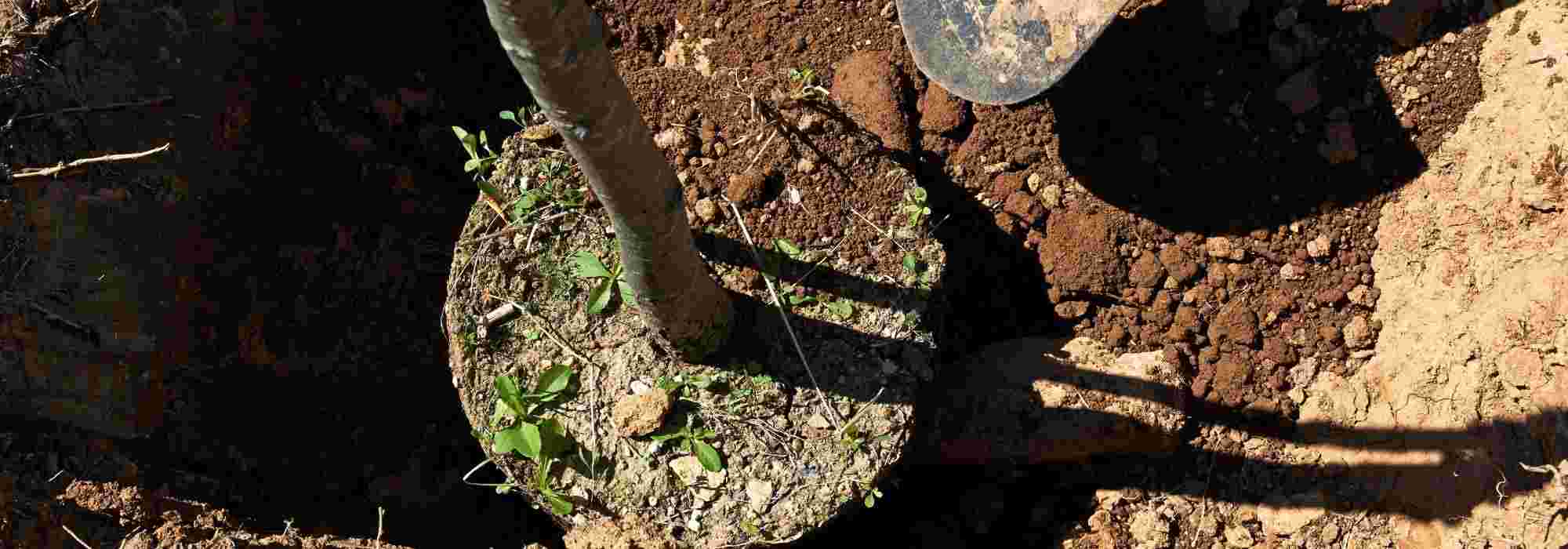
Planting large trees and shrubs: for an immediate impact
Our explanations
Contents
The most impatient gardeners are always tempted by the acquisition of a well-developed tree or shrub. Often sourced from a nursery specialising in large trees and bushes, these plants are 6 to 20 years old and their height varies between 3 metres and 20 metres tall for the largest. By planting a large tree or bush, you can enjoy its shade, decorative effect, or fruiting immediately or within a very short time. Despite this time-saving benefit, some drawbacks should not be overlooked, particularly the higher cost and the quality of the plants’ rooting. Indeed, a large tree or bush may root less effectively than a smaller specimen, which will eventually catch up in height after a few years. Discover the tips and specifics that will be useful for purchasing and planting an XXL tree or shrub!
What types of packaging are available for large trees and shrubs?
In containers
Many trees and shrubs are available in pots ranging from 10 to 50 litres and more. This packaging is the most common and allows for planting throughout the year. Additionally, plants can be kept in containers for longer than in bare roots or clumps. However, if the plant remains in the pot for too long, the roots eventually run out of space. They become tangled and form a knot. This complicates the plant’s rooting in the ground. When purchasing, check the condition of the plant’s root system.
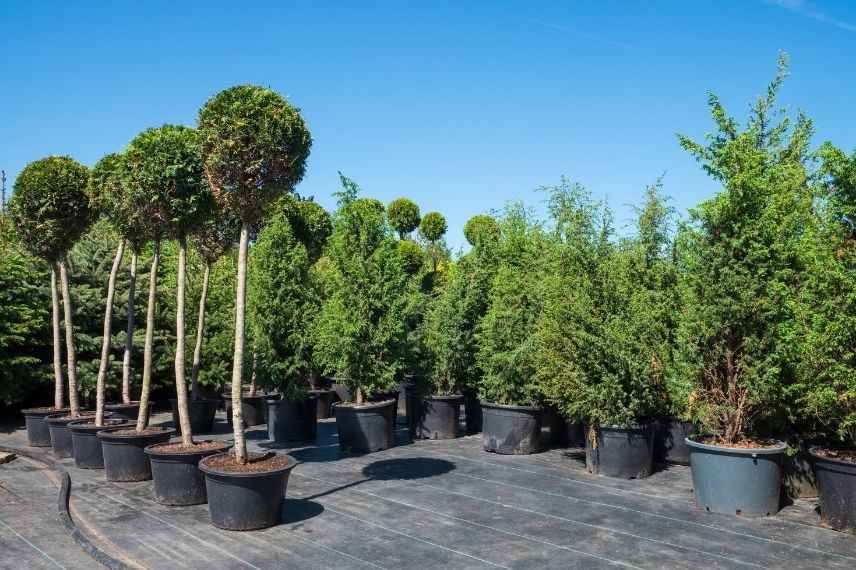
Trees conditioned in pots
In bare roots
Due to the absence of soil around the roots, this packaging has the advantage of being lighter and easier to transport. Another significant positive point is the very attractive price of these plants. The downside is that the roots are fragile: they must not be exposed to air and sunlight, or they risk drying out. It is necessary to plant the tree or bush (or place it in temporary storage) as quickly as possible. Additionally, there are some specific techniques to know for planting.
In clumps
Trees and shrubs in clumps develop in the ground, in nurseries, over several years during which they have been dug up and replanted multiple times (4 to 10 times depending on the desired size). The extraction (or cercing) of these plants is done using a machine that cuts a large clump of soil. The roots are partially cut at this time, which promotes branching and multiplication of the root system. It takes about 6 years to create a well-formed root hair system. When the tree is extracted for sale, the roots wrapped in the clump of soil are protected by a jute/cotton mesh or straw, all surrounded by natural material fencing for added strength. This decomposes in 1.5 to 2 years. Although this packaging is more expensive and transport is more complicated (weight of the clump), it allows for obtaining high-quality plants with very good chances of survival.
When to plant a large tree or shrub?
Be aware that the planting period varies depending on the type of packaging and the type of plant.
- Deciduous trees and shrubs, often supplied bare root, should be planted during their dormant period, from autumn to the end of winter, from October to March, when the soil is not frozen or waterlogged.
- Evergreen trees and shrubs, conifers, and very large specimens are generally supplied in clumps. They can be planted from September to early November or from late March to late April.
- Finally, the vast majority of medium-sized trees and shrubs are available in containers. Planting can be carried out all year round, except during periods of frost and extreme heat.
Discover other Shrubs
View all →Available in 0 sizes
Available in 1 sizes
Available in 1 sizes
Available in 1 sizes
Available in 1 sizes
Available in 1 sizes
Available in 1 sizes
Available in 1 sizes
Available in 1 sizes
Available in 1 sizes
How to plant a large tree or shrub?
Planting a large tree or shrub should not be taken lightly. It requires prior preparation and logistical planning. Here are our tips:
Preparing the ground
Before digging your planting hole, check the planting distances to observe based on the size of your tree or shrub.
Dig your planting hole about 1 month before the planting day and during dry weather. This period allows the soil to aerate, facilitating drainage. Your planting hole should be wider than it is deep: twice the width and one and a half times the depth of the root ball. To respect the different layers of soil, make a first pile with the soil extracted from 25-30 cm deep. This is the rich and fertile topsoil. Then, make a second pile with the soil extracted beyond 30 cm deep. This soil is of lesser quality. To remember the order of extraction of the two piles until the planting day, mark your two piles, for example by placing a large stone on the first pile and two large stones on the second pile. Loosen the bottom of the hole. Add well-decomposed compost or manure mixed with the soil. As a precaution, you can add a layer of soil (10 cm) to prevent root burn for your future tree or shrub. Indeed, direct contact with poorly decomposed amendments can damage the roots.
Logistical considerations
When purchasing your tree or shrub, ensure you have suitable transport (trailer, van, etc.) to collect a very large specimen or opt for delivery. Additionally, for a very large specimen or one in a root ball, a lifting device (such as a mini-digger) is essential for moving the tree or shrub. Also, consider the manpower. Seek help from family or friends. Depending on the size of your tree or shrub, one or more people will be useful for these planting tasks (for holding the stake during planting, for example).
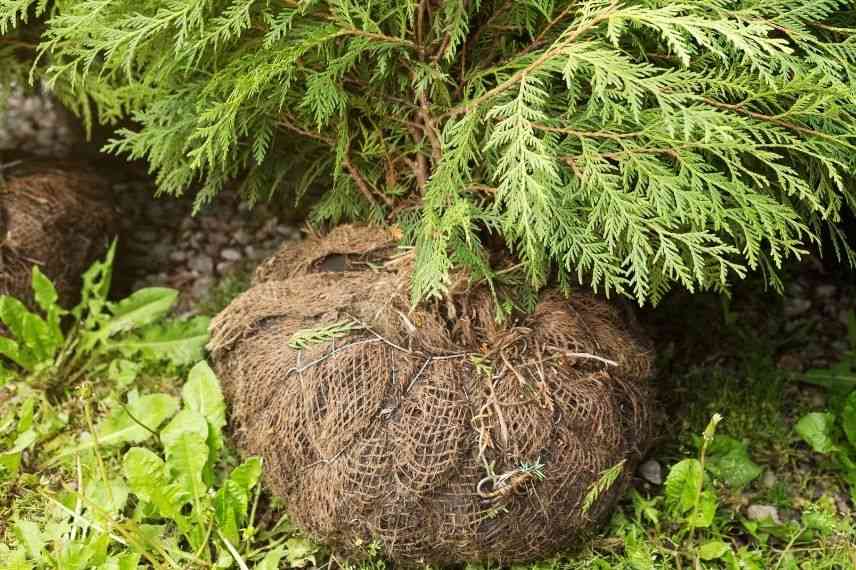
Root ball shrubs weigh heavier than bare root shrubs
Preparing the plants
Be aware that certain specifics must be respected according to the packaging methods:
- Bare root: carry out a dressing and pralinage of the roots.
- In container: gently untangle the roots to avoid root binding, and moisten the root ball by soaking it in a large container filled with water.
- In root ball: water the root ball to moisten it.
- Dressing the crown of the tree is also necessary before planting. This involves pruning the branches to facilitate the tree’s recovery and shape its future silhouette.
Planting
- Set up staking or guying before planting the tree. The stake should provide support against prevailing winds and will remain in place for 2 years.
- Place your tree or shrub so that the collar is slightly above soil level. For root ball specimens, cut the part of the mesh around the collar, pulling it back about fifteen centimetres from the collar. Be careful not to remove the mesh (unless it is plastic), as it holds the root ball together. For bare roots, place them in the hole flat without folding or breaking them.
- Check that your tree and shrub are upright.
- Backfill the hole in the following order: first the second pile of soil (with the 2 large stones), then the topsoil (the pile with 1 large stone).
- Attach the tree to the stake.
- Firmly compact the soil with your feet.
- Form a watering basin around the tree with the remaining soil. Water generously.
- Finally, add a layer of mulch about ten centimetres thick at the base of your freshly planted tree or shrub.

Maintenance after planting
- Be aware that it is preferable to water generously in one go, rather than a small amount every day. During the two weeks following planting, water your tree/shrub three times a week. After that, water it once a week. Continue watering until it freezes. Stop during winter. As spring arrives, resume watering and increase water supplies during dry periods. Regularly check the soil moisture at a depth of 15 cm. There is no absolute rule for the amounts of water to provide; it varies between 30 and 300 litres per watering, depending on the size and type of the plant, as well as climatic conditions. Over the first three years, as the roots extend, widen the watering area around the tree.
- Reform the watering basin if necessary.
- Remove any weeds that appear on the mulch and replenish the mulch.
- Periodically check the health of your plant.
- Check the ties of the staked tree. If they compress the trunk, loosen them. After two years of planting, remember to remove the stake from the tree.
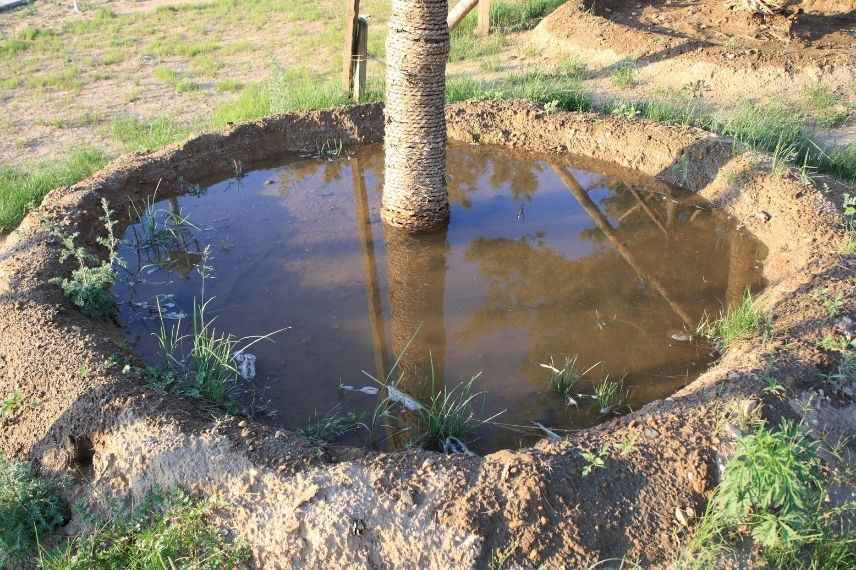
Well-formed watering basin
For further reading
- Read our article for how to plant trees and shrubs in bare roots
- Discover what you need to know about root dressing and coating the roots of trees and shrubs with pralin
- Read Olivier’s tips on transplanting trees, shrubs, roses, and perennials: when and how?
- All of Marion’s advice to stake a fruit tree
- Learn more about Hedges, shrubs, trees: What are the planting distances?
- Subscribe!
- Contents

































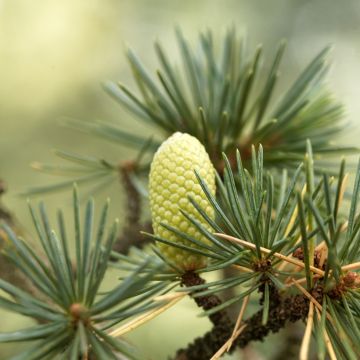
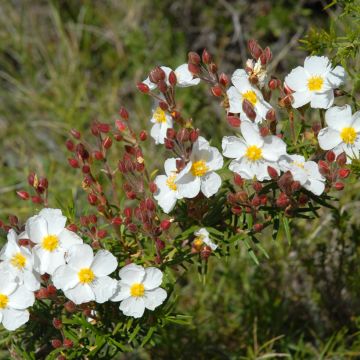
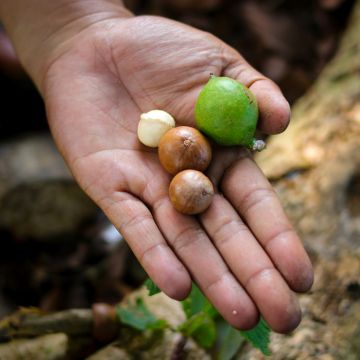

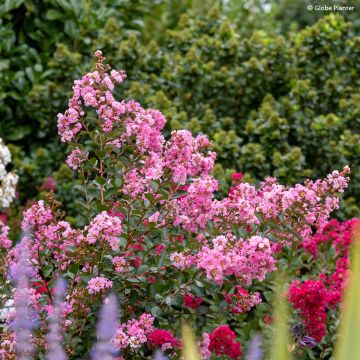

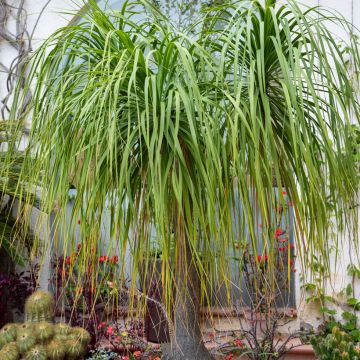
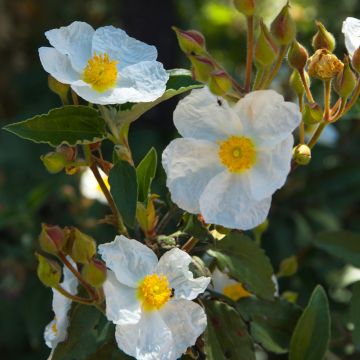
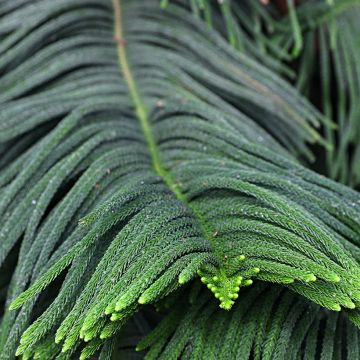
Comments